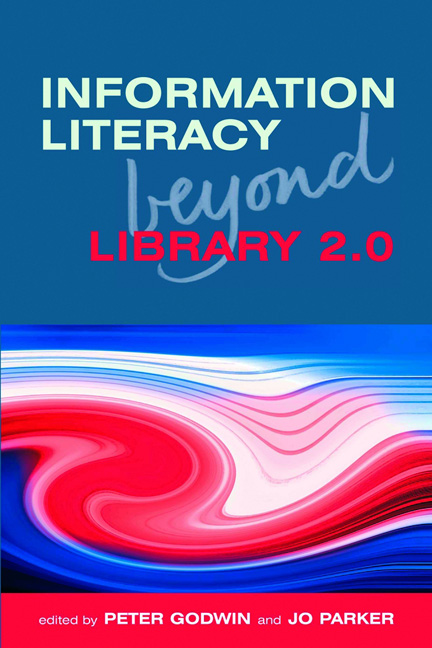Introduction
Published online by Cambridge University Press: 09 June 2018
Summary
Information Literacy Meets Library 2.0 was something of a journey into the unknown. The Web 2.0 ‘characters’, as I often referred to them in my talks, were new, and to some, exciting. It was a fun time to write a book and we didn't think there'd be a sequel: despite requests from Facet Publishing, we would not emulate the Hollywood blockbusters and spawn another offering. So what changed my mind? One evening, while I was ambling home from the bus stop, reflecting gently to the strains of Telemann (or was it Siouxsie and the Banshees?) via an iPod, the possibility of a book seized me. A few days later I visited Jo Parker, my fellow editor, at the Open University and very tentatively suggested a sequel. To my great surprise she agreed to come on board – and here we have it.
Web 2.0 has affected the delivery of information literacy (IL), and somehow seems to have also affected what it means to be information literate. There has been much IL research questioning its nature, and I suspect that most of this has not reached the majority of practitioners. Indeed, I suspect there is something of a disconnect between IL research and IL practitioners. They often produce the MEGO (my eyes glaze over) effect on me, and I suspect that I am not alone! This is on the one hand understandable, due to the complex language used in some research articles, but on the other hand regrettable, because important insights are being gained that all practitioners should know about. My selection of these is bound to be incomplete, and I apologize in advance for any MEGO effects caused by my own writing! In the first chapters of this book I shall set the scene with a detailed discussion of what has happened to information literacy and Web 2.0 in the past three years. What was Library 2.0? Was it over-hyped? How did it connect with the so-called web generation? Then we will look at how social media have become mainstream and where there have been successes and failures. We will then examine what effects Web 2.0 has had on information literacy.
- Type
- Chapter
- Information
- Information Literacy Beyond Library 2.0 , pp. xvii - xxPublisher: FacetPrint publication year: 2012

